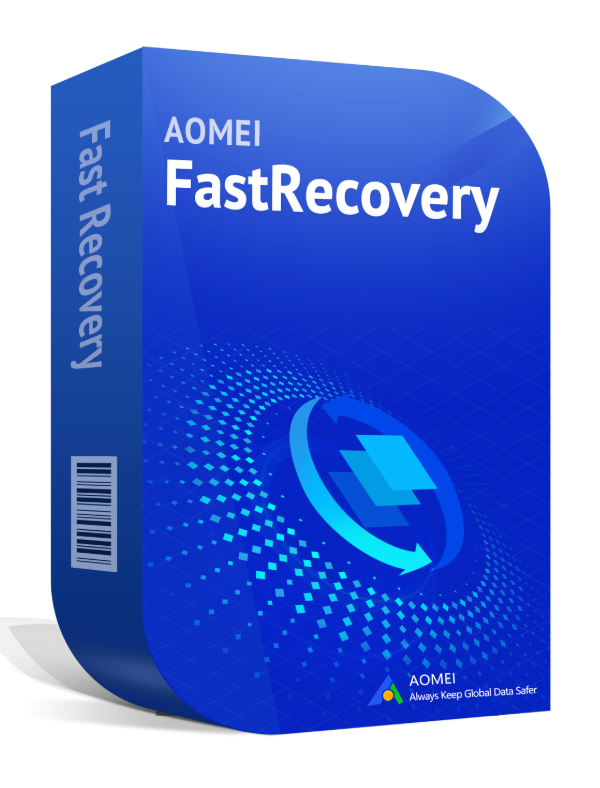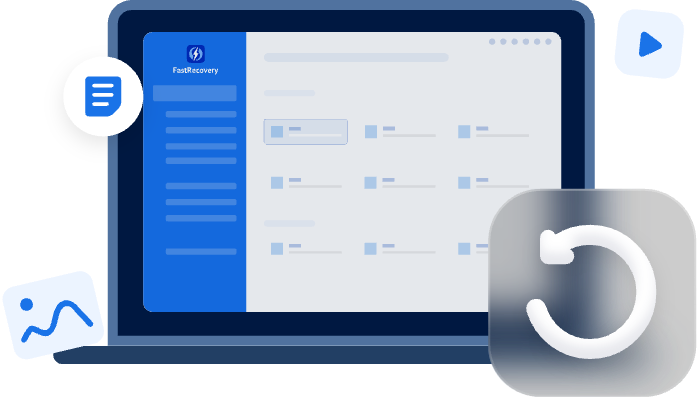Can You Really Put a Hard Drive in Freezer to Recover Data?
Does putting hard drive in freezer to recover data really work? Explore the science, risks, and modern alternatives involved.
Back in the day, when your old-school mechanical hard drive fails, maybe it’s making that dreaded clicking sound or not spinning up at all, someone somewhere will always suggest putting hard drive in freezer to recover data. Just wrap it up, chill it for a few hours, and boom: your files come back, very god... with ice cubes.
But does this freezing method really work? Is it a last resort that causes more harm than good?
Hard Drive in Freezer to Recover Data, Supposedly Works
The "freezing hard drive" trick has been around for years, with some claiming it can temporarily revive a failing hard drive. Here's a simplified breakdown of the possibility and theory behind it.
Real-World Success Stories and Skepticism
The "freezer trick" has been shared across Reddit, tech forums, and DIY repair blogs for years. Some users swear it gave them just enough time to pull important files off a dying hard drive.
Technicians, especially in the early 2000s, have even reported limited success with this method, usually with older HDDs showing mechanical failure symptoms like clicking or overheating. But here’s the catch:
- These successes are rare and often short-lived, maybe minutes of drive access at best.
- What works for one dying drive might not work at all for another, even with the same symptoms.
- Controlled lab environments rarely replicate this success, while “garage experiments” can be inconsistent and risky.
In short: yes, it has worked, but only sometimes, and only briefly. It’s more of a last-ditch gamble than a reliable recovery method.
The Theory Behind the Cold Fix
- 1. Shrink Metal Components to "Unstick" Parts: Mechanical hard drives (HDDs) have moving parts like platters and read/write heads. Over time, these can get stuck or misaligned. Freezing the drive can cause the metal to shrink, potentially loosening stuck components or shifting them back into place, allowing the drive to work long enough for data recovery.
- 2. Fix Thermal Expansion Issues: Hard drives can suffer from overheating, causing parts to expand and misalign. Freezing cools the components down temporarily, bringing them back into alignment, allowing the drive to work again, just enough to recover important files.
- 3. Read/Write Head Re-Alignment: When the read/write head gets stuck on the disk (a condition called "head crash"), freezing may help realign the head by reducing friction, giving you a brief window to copy your data before the drive fails again.
What Kind of Hard Drives Might Respond to Freezing?
- 1. Old HDDs vs. SSDs: This trick only works on mechanical hard drives (HDDs) with moving parts. Solid-state drives (SSDs) have no moving parts, so freezing them won't help.
- 2. Drives Making Clicking or Grinding Noises: If your drive is making strange noises like clicking or grinding, it’s likely a mechanical failure, which could potentially be helped by the freezer trick. If the issue is related to heat or misalignment, freezing might give you enough time to recover data.
- 3. Drives with Heat-Related Malfunctions: Overheating can cause hard drives to malfunction. Freezing might temporarily stabilize the drive, allowing you to recover files before it stops working again.
What Are the Risks of Freezing Your Hard Drive?
While the idea sounds clever, freezing a hard drive comes with serious risks:
- 1. Moisture Condensation: When you take out the cold drive from the freezer, condensation can form on internal components. This moisture can short-circuit the electronics or cause corrosion, leading to permanent, unrecoverable damage.
- 2. Permanent Data Loss: If the freezer trick fails or damages internal parts, it might move your drive from “potentially recoverable” to “completely dead”.That’s a big risk, especially if you only get one shot.
- 3. Voiding Warranties: Any DIY attempt like this will likely void your manufacturer’s warranty(if it is). Worse, it can make things harder for professional recovery services later as opening or altering the drive may complicate cleanroom recovery efforts.
Bottom line? Freezing your hard drive should be your absolute last resort, after you’ve exhausted safer methods or professional options.
⚠️How to Put Hard Drive in Freezer to Recover Data
(Not recommended, but here's how it’s usually done)
To ensure the disk and data are safe, back up the drive and then seal the drive in an anti-static bag with desiccant, thus taking up any possible incoming moisture.
Then, put hard drive in freezer, usually for 12-24 hours, to attempt to “reset” the internal mechanical parts of the drive, especially the disk platters and read/write heads. Once done, plug your drive into a computer quickly and copy your crucial data fast (if it’s accessible). This usually only takes a few minutes.
Smarter and Safer Alternatives to hard drive recovery freezer 🔥
(Because freezing your drive isn't really a recovery plan…)
The infamous “freezer trick” might sound like a last-resort hack for saving a dying hard drive, but let’s be honest, it’s risky, outdated, and rarely works. Before you shove your hard drive into the icebox, take a breath and consider safer, smarter, and far more effective alternatives.
Option 1: Data Recovery Software
Software solutions are often the first and best line of defense when your files go missing, especially if your hard drive is still functioning to some degree.
AOMEI FastRecovery is one of the best Windows data recovery software that can recover deleted or lost files in Windows 11, 10, 8, 7, etc., and Windows Server. It is user-friendly, fast, and has strong file recovery capabilities.

- It has a free edition to recover data.
- With a user-friendly interface and just a few clicks, no technical skills required.
- Fast and thorough scanning methods, designed for different scenarios, e.g., accidental deletion, formatted drive, corrupted drive, virus attack, etc.
- Support a wide range of data types, from documents (e.g., recover Word files) to images, videos, emails, etc.
- Uphold some extra features, e.g, filter, file preview, selective recovery like recovering specific files or folders, crashed PC recovery, etc.
You just need to open this software, navigate to the Hard Drive Recovery section and select your hard drive to scan. The process is very fast and takes only 3-5 seconds. Then, try to search or filter files quickly. At last, double-click to preview files (if not sure) and select the wanted files to recover.
If you can’t find the desired data, click the Deep Scan button to scan your drive thoroughly. This mode will take longer. Just wait patiently. Also, you can choose to search or filter files while scanning.
✅ When Does Software Work Best?
- Accidental deletion – You Shift+Deleted files or emptied the Recycle Bin too soon.
- Formatting errors – You mistakenly formatted a partition or USB drive.
- Corrupted partitions – File system shows up as RAW or unallocated.
- Virus or malware damage – Your files were hidden or removed by malicious software.
❌ When Software Might Not Help:
If your hard drive:
- Doesn’t spin up at all
- Makes strange noises (like clicking, buzzing, or grinding)
- Isn’t recognized by BIOS or your OS
…it’s a physical issue, and software alone won’t fix that. Powering it up repeatedly can cause more damage. In such cases, skip ahead to the professional data recovery services.
Free download AOMEI FastRecovery to get started!
Option 2: Professional Data Recovery Services
Sometimes, the best move is to call in the pros. Professional data recovery services are equipped to handle hardware-level failures and situations where software recovery is impossible.
✅ When Should You Contact a Professional?
- Your drive is physically damaged (e.g., dropped, water exposure)
- It makes mechanical noises like ticking or clicking
- Your PC doesn’t detect the drive at all
- You've already tried software but got no results
- The data is mission-critical (business files, client work, personal memories)
🧰 What Do Pros Actually Do?
Professional labs use cleanroom environments and specialized tools to safely open and access your hard drive. Their process includes:
- Class 100 or 1000 clean rooms – Dust-free environments for opening drives without contaminating the platters.
- Platter imaging – Creating a sector-by-sector clone of your drive before attempting recovery.
- Microscopic diagnostics – They examine and repair tiny mechanical or electronic components (e.g., read/write heads, firmware chips, PCB boards).
They may also swap platters or transplant internal parts to retrieve data from totally dead drives, procedures far beyond DIY.
⏳ Cost vs. Data Value: What’s It Worth?
|
Recovery Option |
Estimated Cost |
Best Use Case |
|
Basic software |
$0 – $100 |
Simple deletions, logical errors |
|
Mid-level recovery services |
$300 – $800 |
Minor physical issues, firmware problems |
|
Advanced lab recovery |
$1,000 and up |
Severe hardware failure, platter/head damage |
It’s expensive, but if you’re recovering irreplaceable data like family photos, financial records, or critical business info, it’s often worth every penny.
Final Thoughts
Putting a hard drive in Freezer to recover data might be tempting if you’re desperate, but in most cases, it does more harm than good. Start with software solutions like AOMEI FastRecovery, and if that doesn’t work, trust the experts with cleanrooms and decades of experience.
Data recovery isn’t just about saving files, it’s about doing it safely and responsibly. If it’s possible, you are advised to backup hard drive before recovery. This is also necessary after data recovery (if you don’t want to lose data in the future).

